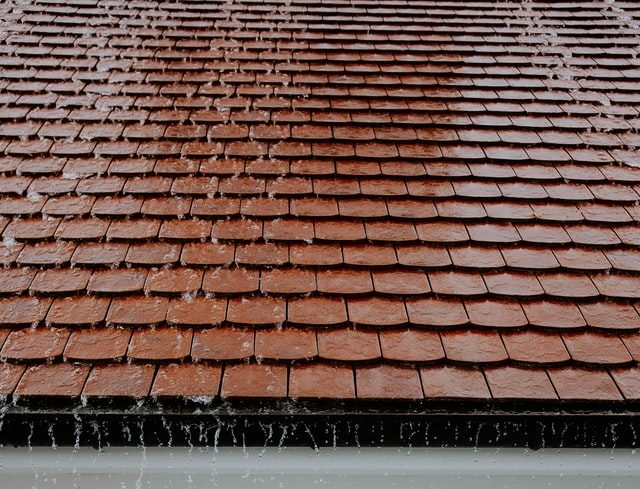
A roof leak can seem like a bit of a nightmare scenario. After all, alongside the primary damage that caused the ingress, water can cause additional problems throughout your home. Rotting, mold, pests, and rusting can all follow on from a leak that is left unaddressed for too long. This is not only unpleasant to deal with, it also tends to be costly. As such, it’s always in your best interest to find the source of your leak and take care of it immediately.
If you’re handling the issue personally, many of the easiest and safest routes to pinpointing the ingress involve access to an attic. However, there may be circumstances where this isn’t an option for you. Many newer homes are being built without attics for energy efficiency purposes or to maximize space. It might be the case that you simply aren’t able to move freely around a roof crawl space. Whatever the reason, you’ll need an alternative method to detect the source of a leak. The good news is, that while it’s not always easy, there are other options.
The Short Answer
The simplest solution for how to find a roof leak with no attic is to hire a roofing contractor. They have access to digital tools that don’t require them to climb into a roofing crawl space. Infrared thermography cameras, Electronic Leak Detection (ELD) meters, and moisture meters can all be used by a professional to quickly spot the cause of a leak.
However, if you’re trying to minimize initial expenditure or are confident about going it alone, there are some steps you can take.
1) Check for Indoor Signs
While you’re likely to eventually have to climb up on the roof, this is not your first step. Your detection process should begin with the interior of the building. Go to the top floor of your home and carefully inspect your ceilings and walls. You’re looking for signs of any high water staining. If you’re not familiar with this, it tends to form in patches, often with a slightly different colored ring (or halo) on the outside. This might not always be obvious, in the early stages the patch might only be slightly darker than the surface.
If you don’t have an attic, it’s likely that your home is vaulted — in that the ceiling is A-shaped, with a peak. It might be the case that you have multiple water stains along your ceiling. To start locating the source of the leak, you need to find a smaller stain that is higher up the vault (closer to the peak of the A) than the others. In most cases, these higher, smaller water stains are either at the source or close to it. This is because the lower larger stains are likely to be caused by water flowing down from the leak ingress and pooling, causing a larger stain over time.
Make a note of the general position the higher, smaller stain is on your ceiling. This will be the area you need to undertake an inspection when you’re up on the roof.
2) Take Precautions
When it comes to any type of roof leak detection, safety is paramount. No leak is worth the risk of you falling or taking any kind of injury. You should therefore take a few key precautions. Firstly, take a little time to think about your physical condition — if you have trouble climbing, moving around freely, or maintaining your balance, call in an expert, family member, or neighbor instead.
Wherever possible, make sure that there is someone who can assist you. They can help to make sure the ladder is secure, and spot you to minimize any hazards that you may not notice. Pay attention to your clothing, too — particularly your shoes. A good option here is rubber soles with plenty of grip.
A sturdy ladder is a must when heading onto your roof, too. Your standard A-frame step ladder isn’t going to cut it here. You need a straight, extendable ladder that can securely attach to the ledge of your roof.
3) Perform a Surface Inspection
Now it’s time to head up to your roof, it’s important to take this slowly. Not only from the basis of safety, but particularly if you have tiled roofing, walking carelessly around the surface could lead to further damage. Take your time here.
Before moving from the ladder to the roof surface, take a moment to check for any obvious visual signs that may be the cause of the leak. In the case of a sagging roof, for instance, you may be able to see subtle dips on the roof material. However, if nothing obvious is in view, it’s time to slowly, carefully move toward the general area you pinpointed by identifying the water stains. If you have tiles, the best approach is to spread your weight as much as possible across the tiles, rather than transferring it from foot to foot.
Once you’ve reached the intended area, look around for signs of any surface damage. This could include cracks in any tiles or roofing material. Shingle might be raised or buckled. Look around at the flashing, too — these are the pieces of metal that direct water away from flat areas or joins (like those at the chimney or smaller peaks). If the flashing is damaged, this could be the reason water is leaking through your roof.
4) Confirm the Leak Area
Your next step in how to find a roof leak without an attic is pinpointing where the water is getting in. This may be helped by the note you’ve made about the water staining areas. There may also be other tell-tale signs like moss or mold growing around the tiles or shingles.
In the suspect area you should use a pry bar to gently remove tiles or shingle. When you take a look beneath, it may become clear where the water is getting in. The underlayment may be damaged, or there could be issues with the tar paper or evidence the wood of the deck is rotting. However, it could be the case that there are no visible signs of leak or damage in the area you thought might be the root.
If this is the case, you should replace the removed elements of the roof. You can then bring a hose or bucket of water up onto the roof to methodically test for evidence of leaks. Pour a small amount of water on a patch of your roof at a time and watch for it draining into other areas. If this happens you may need to remove more tails or shingle to perform further checks until you find the source.
Wrapping Up
Knowing how to find a roof leak with no attic is about understanding the step-by-step process that narrows down the positions and potential culprits.
- Look for the indoor tell-tale water stains and pinpoint the highest one.
- Take relevant safety precautions before venturing onto your roof.
- Inspect the surface for further evidence of leaks and potential causes.
- Lift the suspected areas of roof material to confirm the point of ingress.
However, this is the best case scenario for a leak. It’s worth bearing in mind that not all leaks will be easy to pinpoint. Some of the evidence may be too subtle and not all homeowners have the skill or confidence to conduct investigations on a roof. As such, it tends to be your best first option to seek professional guidance and assistance.





